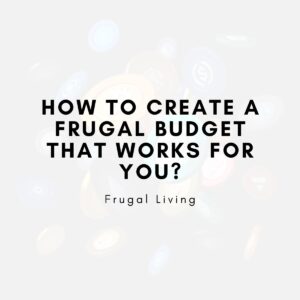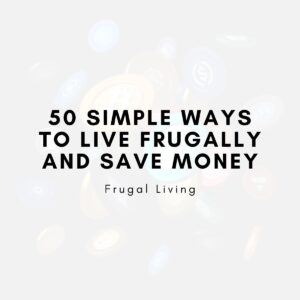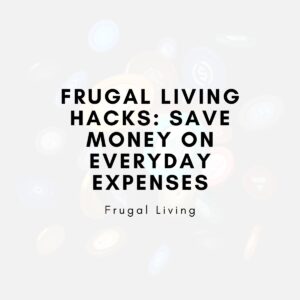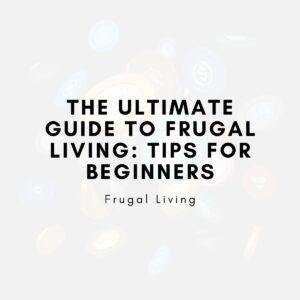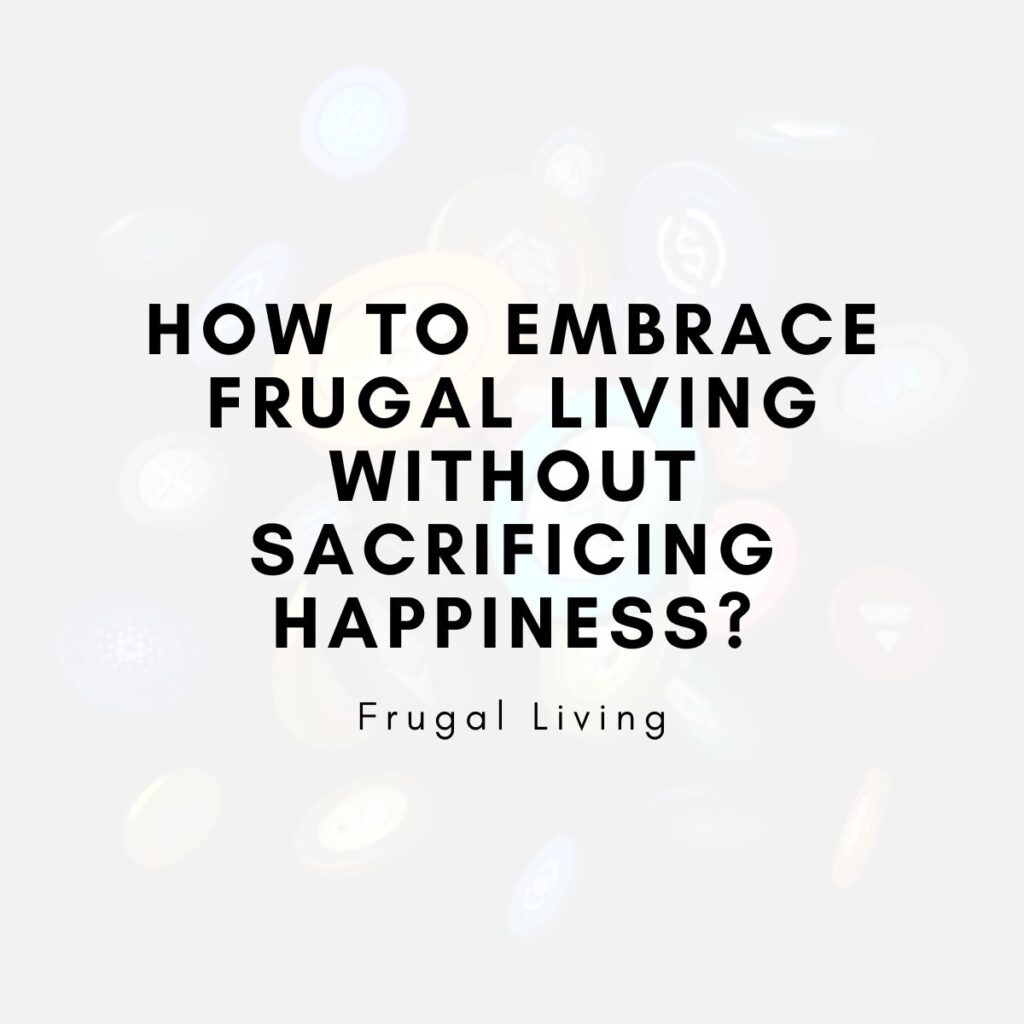
How can you embrace frugal living without sacrificing happiness?
You can embrace frugal living by focusing on mindful spending, prioritizing experiences over material goods, adopting DIY practices, and finding joy in simple, cost-effective activities. This approach helps you save money while maintaining a fulfilling and happy lifestyle.
Introduction
Frugal living often gets a bad reputation as a lifestyle of sacrifice and deprivation. However, this couldn’t be further from the truth. Embracing frugality can lead to greater financial freedom, reduced stress, and even increased happiness—all without feeling like you’re missing out. The key lies in making intentional choices that align with your personal values and bring joy to your life. Whether it’s saving for a dream vacation, reducing debt, or simply feeling less financial pressure, frugality can pave the way to a more fulfilling and balanced life. In this guide, we’ll explore practical strategies to embrace frugal living while preserving your happiness, complete with actionable tips and real-world examples to help you get started.
What is Frugal Living?
Frugal living is not about being cheap or denying yourself pleasures; it’s about being intentional with your resources. It involves making thoughtful financial choices to reduce unnecessary spending while maximizing the value and satisfaction you derive from your money. Unlike strict budgeting, frugality gives you the flexibility to spend on things that truly matter while cutting back on areas that don’t align with your priorities. By shifting your focus from acquiring material goods to cherishing meaningful experiences, you can build a lifestyle that is both financially sustainable and personally enriching.
Example:
Consider furniture purchases as an example. Instead of spending $500 annually on trendy but low-quality furniture that quickly wears out, you could invest $1,000 in timeless, durable pieces that last a decade. Over ten years, this saves $4,000 while enhancing the quality of your home environment.
Key Takeaways:
- Frugal living prioritizes value and long-term satisfaction over short-term indulgence.
- Aligning your spending with your priorities can lead to greater fulfillment.
- Choosing quality over quantity helps reduce waste and unnecessary costs.
Benefits of Frugal Living
Adopting a frugal lifestyle goes beyond saving money; it can profoundly impact multiple aspects of your life. When practiced thoughtfully, frugality can unlock financial freedom, improve your mental well-being, and even contribute to environmental sustainability. Let’s delve deeper into these benefits.
Financial Freedom
One of the most significant advantages of frugal living is the ability to save money and reduce financial stress. By eliminating unnecessary expenses, you can free up resources to pay off debt, build an emergency fund, or invest in your future. This financial cushion provides a sense of security and opens doors to opportunities that might otherwise feel out of reach.
Reduced Stress
Living paycheck to paycheck can be mentally exhausting, but frugality can help break this cycle. By focusing on mindful spending, you can avoid the anxiety associated with financial uncertainty. Instead, you’ll find comfort in knowing that your resources are being allocated wisely and that you have a plan for the future.
Environmental Benefits
Frugality often aligns with eco-friendly practices. When you reuse items, reduce waste, and buy only what you truly need, you minimize your environmental footprint. This creates a positive impact not only for your wallet but also for the planet.
Example:
Switching to a reusable water bottle for $20 instead of spending $2 daily on disposable bottles saves over $700 annually. Additionally, this small change reduces plastic waste, contributing to a healthier environment.
Building a Frugal Mindset
The journey toward embracing frugality begins with a shift in mindset. It’s not merely about cutting costs but about adopting a thoughtful approach to how you use your resources. To successfully integrate frugality into your life, you need to focus on your goals, challenge societal norms, and find contentment in what you already have.
Identify Your Priorities
Take a moment to reflect on what genuinely brings happiness into your life. Is it quality time with family, traveling, or pursuing a hobby? By identifying your core priorities, you can align your financial decisions with the things that matter most to you.
Practice Gratitude
Cultivating gratitude helps you appreciate what you already have rather than constantly seeking more. When you focus on the positives in your life, you’re less likely to make impulsive purchases driven by dissatisfaction.
Example:
Imagine maintaining your current vehicle with an annual servicing cost of $300 instead of upgrading to a newer model with monthly payments of $500. Over a year, this saves $5,700, which could be redirected toward a $3,000 dream family vacation while still leaving room for other priorities.
Budgeting for Happiness
A budget is a powerful tool for balancing financial responsibility with the pursuit of happiness. Contrary to popular belief, budgeting isn’t about deprivation—it’s about empowerment. By understanding where your money goes, you can allocate it in ways that bring the most joy and value to your life.
Track Your Expenses
The first step in effective budgeting is tracking your income and expenditures. Use budgeting apps like Mint or YNAB (You Need A Budget) or create a simple spreadsheet. This clarity allows you to identify areas where you can cut back without feeling deprived.
Allocate for Fun
While it’s essential to cover necessities and save for the future, it’s equally important to set aside a portion of your budget for activities that bring you happiness. Whether it’s dining out occasionally, taking a weekend trip, or enjoying a hobby, intentional spending on joy is an integral part of frugal living.
Example:
Brew coffee at home for $0.50 per cup instead of spending $4 at a coffee shop. Over a month, this simple switch saves $105. You could use this money to attend a $1,200 annual music festival, striking a balance between saving and enjoying life.
Finding Joy in Simple Pleasures
Happiness doesn’t always come with a high price tag. Often, the most fulfilling experiences are those that cost little or nothing. By shifting your focus to simple pleasures, you can discover a wealth of opportunities to enjoy life on a budget.
Explore Nature
Spending time outdoors is one of the most cost-effective ways to boost your mood and well-being. Activities like hiking, picnicking, or walking through a park are free yet immensely rewarding.
Engage in Hobbies
Rediscover hobbies that you love but may have neglected over time. Whether it’s painting, gardening, or playing an instrument, these activities can provide a sense of accomplishment and joy without draining your wallet.
Example:
Host a potluck dinner with friends where everyone brings a dish. This costs around $10 per person compared to $50 per person at a fancy restaurant. Not only do you save $40 per person, but you also create a warm, communal experience that’s priceless.
Smart Shopping Habits
One of the pillars of frugal living is shopping smarter, not harder. This means being deliberate about your purchases to maximize value while minimizing waste.
Buy in Bulk
Purchasing staples like rice, pasta, or cleaning supplies in bulk can significantly reduce unit costs. This strategy works especially well for non-perishable items that you’ll use consistently over time.
Use Coupons and Cashback Apps
Leverage technology to save money effortlessly. Apps like Rakuten, Honey, or Fetch Rewards can help you find discounts and earn cashback on everyday purchases.
Shop Secondhand
Thrift stores, garage sales, and online marketplaces are treasure troves for affordable, high-quality items. Not only do you save money, but you also give items a second life, reducing environmental impact.
Example:
Instead of buying a brand-new dining table for $800, purchase a gently used one for $200. This $600 saving can be redirected toward a family outing or bolstering your emergency fund.
DIY and Upcycling Projects
Learning to do things yourself can be both cost-effective and rewarding. From home repairs to creative crafts, DIY projects offer a practical way to save money and unleash your creativity.
Home Repairs
Many minor home repairs, such as fixing a leaky faucet or painting a room, can be done with a bit of research and effort. By doing it yourself, you can avoid paying professionals hundreds of dollars for simple tasks.
Creative Upcycling
Upcycling involves transforming old or discarded items into something new and useful. For example, you could turn an old ladder into a stylish bookshelf for under $20 in materials.
Example:
Make your own cleaning solutions using vinegar and baking soda, which cost about $5. Compare this to spending $20 on commercial cleaners. Each batch saves $15, and you gain the satisfaction of creating something yourself.
Affordable Entertainment Options
Enjoying life doesn’t have to mean spending extravagantly. With a little creativity, you can find plenty of entertainment options that are both fun and affordable.
Free Community Events
Many communities host free events, such as outdoor concerts, festivals, or educational workshops. These events provide an opportunity to connect with others and explore new interests without spending a dime.
Streaming Services
Cutting cable and switching to streaming services can save hundreds of dollars annually. Platforms like Netflix, Hulu, or even free options like Tubi offer a wide range of entertainment at a fraction of the cost of traditional TV packages.
Example:
Instead of spending $15 per ticket to go to the movies, host a movie night at home. With popcorn and snacks costing around $5 total, a family of four saves $40 per outing while creating a cozy and personal experience.
Conclusion
Embracing frugal living doesn’t mean sacrificing happiness; it’s about aligning your spending with what truly matters to you. By adopting mindful practices like budgeting, finding joy in simple pleasures, and making smart shopping decisions, you can live a fulfilling life while achieving financial stability. Start small, and gradually incorporate these habits into your lifestyle for a happier, more sustainable future.
Key Takeaways
- Frugal living focuses on intentional spending and maximizing value.
- It can lead to financial freedom, reduced stress, and environmental benefits.
- Align your spending with your values and priorities.
- Budget effectively to allocate resources for both needs and joys.
- Embrace DIY projects and simple pleasures to save money without compromising happiness.
- Small, consistent changes can lead to significant long-term benefits.

